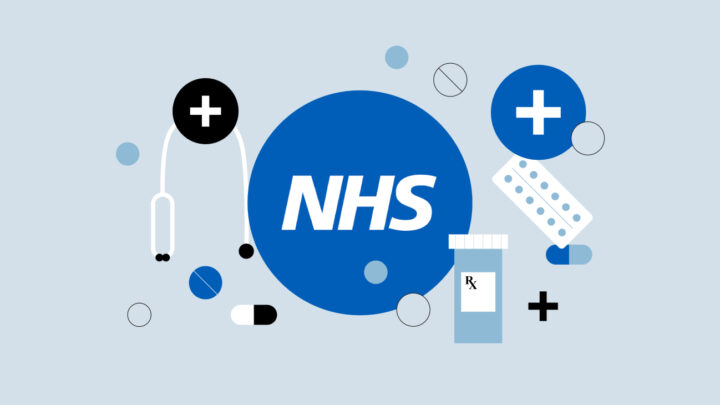
Recent reports highlight disillusionment with the U.S. healthcare system among doctors. In a 2021 survey of physicians from the Advancing Medical Professionalism Foundation, 43% said their trust in government health care agencies decreased throughout the pandemic.
Those who have lost faith in the U.S. healthcare system point to systemic inefficiencies, heavy administrative burdens and a diminishing focus on patient well-being. The question remains whether the system is broken beyond redemption or there’s still hope for meaningful reform.
This article dives into the factors shaping physician dissatisfaction, the ripple effects on patient care and the path forward to regaining trust.
What’s driving physician disillusionment?
Discussions on Sermo indicate that the current US healthcare model has left some physicians feeling burnt out and unsupported. Here’s a closer look at the forces eroding doctors’ faith.
Administrative overload
When polled on how the U.S. healthcare system can be effectively improved, the most popular answer among Sermo members (41% of respondents) said by reducing administrative burdens. Physicians increasingly find themselves buried in paperwork rather than spending time with patients. Tasks such as navigating insurance preapprovals, documenting electronic health records (EHR) and meeting regulatory requirements take away time from direct patient interactions.
Burnout
Physician burnout rates have dropped since the pandemic’s peak. However, a 2025 study reported that burnout rates remain disproportionately high compared to other professions, with 45.2% of physicians reporting that they experience at least one burnout symptom. Among the hardest-hit specialties are emergency and general internal medicine, which serve as front-line points of contact for patients. The study pointed to a need to message back and forth with patients through electronic health records as a massive contributor to burnout, alongside a growing sense of detachment and emotional exhaustion.
Burnout often results in increased workforce turnover, fueling predictions such as the Association of American Medical Colleges’ forecast of an 86,000-physician deficit by 2036. As doctors become more overworked, they lose trust in the system they’re contributing to.
Profit-driven motives
The healthcare system’s prioritization of profits over patient outcomes continues to frustrate medical professionals. Physicians on Sermo have expressed their frustrations toward insurance companies and hospitals. “It is the insurance companies, lawyers, and the hospitals that are the problem,” writes one member. “All convinced the government to set rules that benefit them.” 27% of respondents in the poll on how to improve the U.S. healthcare system indicated that they’d like to see a transition to single-payer healthcare.
Declining patient trust
Physicians are finding themselves in the frustrating position of having to field distrust from their patients. Social media misinformation, insurance complexities and high healthcare costs have eroded public trust in the healthcare system. “I combat vaccine misinformation and social media algorithms daily,” a pediatrician on Sermo shared. In a poll on Sermo, 32% of members said misinformation has a significant impact on their patient interactions, and 38% said it has a moderate effect.
How patient care has been affected
Disillusioned and overburdened physicians aren’t just stepping away from clinical practice; their feelings of discontent are impacting patient care. “Public health is at risk when public trust is eroded,” argues one family medicine physician on Sermo.
Burnout correlates strongly with lower care quality, higher rates of medical errors and decreased patient satisfaction. Physicians experiencing burnout are more likely to reduce their clinical hours or leave the practice altogether. This not only contributes to physician shortages but also compromises care continuity for patients.
The complexity and opacity of insurance coverage only add to the burden on both patients and doctors. “It is often not clear what insurance will and will not cover and especially in oncology fields there is a significant financial strain on patients when insurance doesn’t cover treatments,” an oncologist on Sermo points out.
In some cases, patients may avoid treatments due to the financial strain. “We’re an unhealthy nation of people in the US with healthcare focusing on treating diseases rather than prevention,” writes a physiatrist on Sermo. “Much of this is due to cost, with patients waiting to get care till necessary and then struggling with how to pay for tests or meds because deductibles and copays are significant.”
Is there still hope for change?
With significant challenges at play, some doctors aren’t hopeful about the state of healthcare in the U.S. 52% of surveyed physicians on Sermo said they don’t believe current U.S. healthcare insurance and reimbursement models are sustainable in the long-term. Another 33% said yes, but only with significant reforms. “Current healthcare model is not sustainable due to costs to patients,” states a rheumatologist on Sermo.
10% believe that the U.S.’s current healthcare model is sustainable as it stands. “The model will work if we can show that the quality of care is better than that of a government-only single-payer system,” writes one internal medicine physician.
What do physicians want from the healthcare system?
To restore trust and improve outcomes, physicians are calling for seismic changes. Here’s what they’re asking for:
- Streamlined administrative tasks: reducing bureaucracy allows doctors to focus on patient care.
- Transparent insurance practices: physicians and patients alike need clarity on what treatments are covered to avoid undue financial stress. “Insurance reform is the most needed sector that needs to be addressed,” writes a psychiatrist on Sermo.
- Focus on preventative care: a move towards prevention could lessen healthcare costs nationwide.
- Value-based care models: value-based care shifts funding efforts toward providing better patient outcomes rather than prioritizing volume.
- Single-payer healthcare consideration: while divisive, some advocate a transition to eliminate for-profit motives and minimize disparities.
- Workforce expansion: without addressing physician shortages, patient access to care will only worsen.
- Institutional support for wellness: addressing physician well-being is critical to making clinical practice sustainable long term.
Physicians, patients, and possibility
It’s clear that doctors in the U.S. are grappling with disenchantment as systemic issues overwhelm their ability to care for patients effectively. Amidst frustration and burnout, some physicians are calling for reform. “Hopefully good policies and evidence-based medicine will lead the way,” a cardiologist on Sermo writes.
For physicians navigating these challenges, community and collaboration are invaluable. Forums like Sermo offer an outlet for you to share your perspective. Join today for tools, discussion and support from doctors like you.















